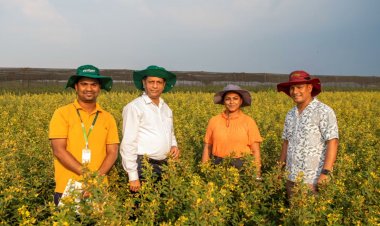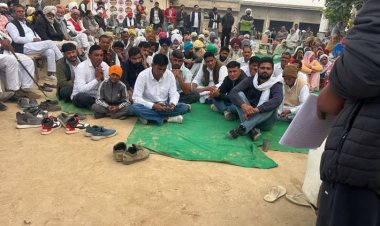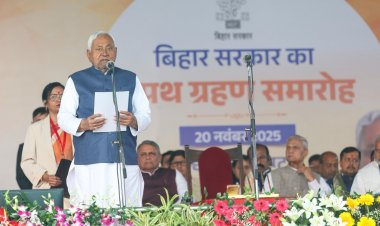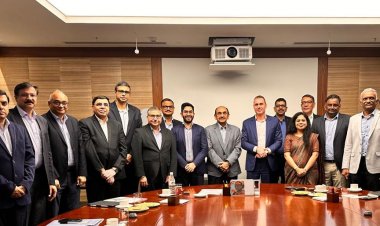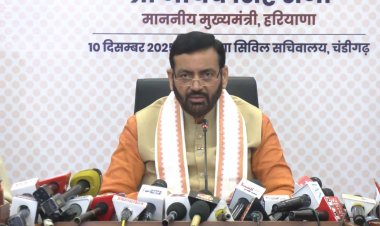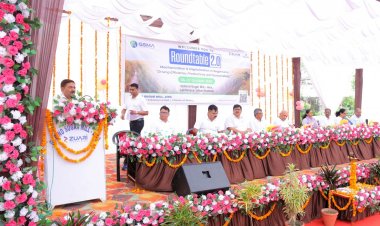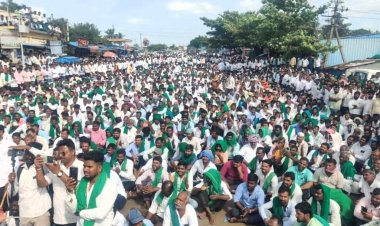Rural Voice Special: Virtual fencing is modern technology for managing cattle in the open; a primer on how it works
Earlier, farmers used bamboo, wood and wire for fencing as per their convenience. As technology developed, solar and electronic fencing began to be used to keep the cattle off the fields without injuring them. And now virtual fencing, which consists of laser-based fencing, drone fencing and integrated smart fencing, is coming into vogue.
Cattle and wild animals often destroy crops standing in the fields. On the other hand, a lot of labour and resources are required to confine the animals to the pastures and monitor them. In order to do so, we need fencing, for which various techniques have been developed. Earlier, farmers used conventional methods of fencing. As technology advanced, newer methods developed. And now virtual fencing is coming into vogue.
Technology consultant Dr Shiv Kumar, Head, Research Committee, Institution of Electronics and Telecom Engineers (IETE), New Delhi, spoke about the technique of virtual fencing and its advantages to farming in the Rural Voice Agritech Show. You may watch this episode of the show by clicking on the video link given above.
Dr Shiv Kumar said that farmers use fencing to keep animals away from the fields without harming them. Wild boars, nilgais, cattle and stray animals damage the crops significantly in different parts of our country. The cattle menace is emerging as a major problem in our country. Crops in fields close to forest areas are affected a lot.
Various techniques of fencing have been developed to protect the crops. Earlier, farmers used bamboo, wood and wire for fencing as per their convenience. But these fences injure the animals. As technology developed, solar and electronic fencing began to be used to keep the cattle off the fields without injuring them. And now virtual fencing, which consists of laser-based fencing, drone fencing and integrated smart fencing, is coming into vogue. Through virtual fencing, we can keep animals under control without harming them.
Dr Shiv Kumar said that the use of Internet of Things (IoT), Internet connectivity and Artificial Intelligence (AI) in agriculture has made things easy — from increasing production to solving problems related to farming. Virtual fencing is being used to protect the crops from the animals and to confine the cattle to a limited area. It is being used in several countries, including Australia and New Zealand. In virtual fencing, when an animal enters the field area or goes out, its movement can be detected by using sensors and it can be thus monitored.
Citing the example of optical-fibre technology virtual fencing, Dr Shiv Kumar elaborated that a developer first creates a sort of virtual boundary with the help of GPS and RFID-enabled software. You go to Google Maps and draw a boundary at the animal monitoring site. Then a mobile app is made with the help of API that is set under that very fixed boundary. That is, the device will work in only that range and an alert notification will be sent for any entry or exit. Thus, the virtual fencing feature can be integrated with any mobile app. Using this, animals can be easily tracked as soon as they come in or go out of the range.
Speaking about drone fencing, Dr Shiv Kumar said that the technique could be used on a large scale. Farmers can use it collectively for a large area. It can be used for large pastures.
Dr Babu Lal, former Executive Director, BHEL, is creating awareness among the villages of Rajasthan at present. Speaking about virtual fencing technology, he said that the use of this technology — such as wireless-based fencing systems, integrated smart fencing and, for larger areas, drone technology — can help monitor the movement of animals. Besides, the actual position and location of the animals can be detected with CCTV cameras. This technology is being used at power plants in the armed forces. The need is that this technology be used in villages at a community level to monitor the animals so that even the smallest farmers from the village can benefit from it.
Stray animals have become a menace for the farmers in the villages, said Dr Babu Lal. In Rajasthan, where you can still find large pastures, one can benefit from the use of these virtual fencing techniques to monitor the animals.



 Join the RuralVoice whatsapp group
Join the RuralVoice whatsapp group


















